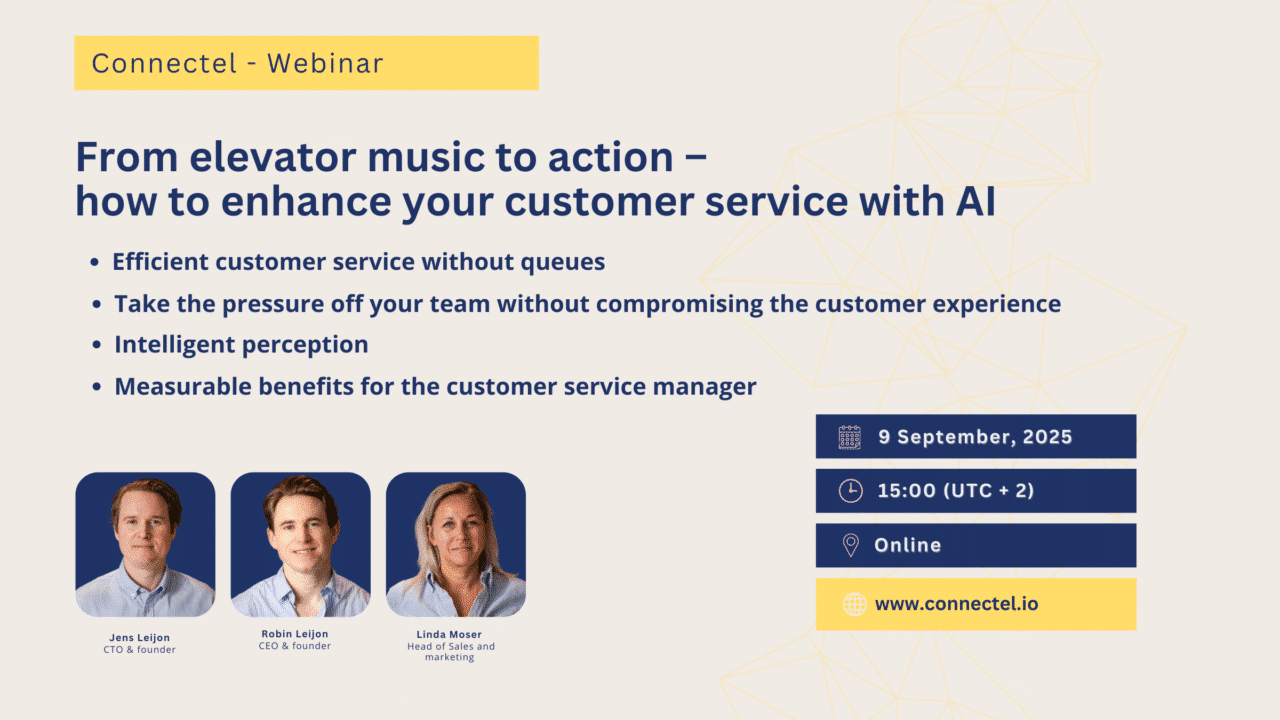
How to effectively work with CSAT and NPS
When working with customer service, it’s important to keep track of your customers’ satisfaction levels which is why we measure Customer Satisfaction Score (CSAT) and Net Promoter Score (NPS).
A common goal in contact centers is to increase your customers satisfaction with your service. And as we know, how happy they are with your service is closely tied to satisfaction and loyalty with your brand and overall offering. In order to make operation decisions that actually increase happiness, you have to start by understanding what your customers are currently satisfied, and dissatisfied with.
This is where Customer Satisfaction Score (CSAT) and Net Promoter Score (NPS) come in. These two key performance indicators (KPIs) are crucial for measuring customer satisfaction and loyalty.
CSAT measures how satisfied customers are with a particular product or service, while NPS measures how likely customers are to recommend a product or service to others. In this article, we will go through what CSAT and NPS are in detail, and how you can work with these KPIs to improve your customer service.
Understanding CSAT
Customer Satisfaction Score, or CSAT, is a metric used to measure how satisfied customers are with a specific product or service.
CSAT formula
CSAT scale is typically measured on a scale of 1 to 5 weighted as follows:
- Dissatisfied: 1 and 2
- Neutral: 3
- Satisfied: 4 and 5
Formula: (total number of satisfied responses) / (total number of survey responses) x 100 = % satisfied customers.
For example, say you send out a survey and receive 289 survey responses in total. You have 241 satisfied customers, in other words customers who answered four or five. You would then calculate 241 / 289 X 100 = 83. Therefore, your CSAT score would be 83%.
Improving your CSAT score requires identifying and addressing the factors that lead to customer dissatisfaction. This could involve improving the quality of your product or service, enhancing the customer experience, or simply providing better customer support.
Understanding NPS
Net Promoter Score, or NPS, measures customer loyalty by asking customers how likely they are to recommend a product or service to others.
NPA formula
NPS surveys typically ask customers to rate their likelihood of recommending on a scale of 1 to 10 weighted as follows:
- Detractors: 1-6
- Passive: 7-8
- Promoters: 9-10
NPS is calculated by subtracting the percentage of detractors (customers who rated their likelihood of recommending at 6 or below) from the percentage of promoters (customers who rated their likelihood of recommending at 9 or 10). The resulting score can range from -100 to 100.
Formula: (% of detractors) – (% of promoters) = NPS score
For example, say you have 80 promoters, 20 passives and 40 detractors. You then have 57% promoters and 29% detractors. You would therefore calculate 57 – 29 = 28. Meaning your NPS score would be 28.
Improving your NPS score requires improving customer loyalty and satisfaction. This could involve enhancing the customer experience, improving the quality of your product or service, or simply providing better customer support.
Working with CSAT and NPS
To effectively work with CSAT and NPS, it is important to:
- Regularly measure and track these KPIs. This could involve sending out regular surveys or using a customer feedback tool to collect data.
- Analyze the data to identify trends and patterns. Look for areas where your customers are consistently dissatisfied or where your NPS score is consistently low.
- Take action to address the issues identified. This could involve improving your product or service, enhancing the customer experience, or training your agents to provide better support.
- Monitor your progress and continue to measure and track CSAT and NPS over time. This will allow you to see whether your efforts are making a difference and whether you need to make further improvements.
Summary
In conclusion, CSAT and NPS are crucial KPIs for measuring customer satisfaction and loyalty. By regularly measuring and tracking these metrics, analyzing the data, and taking action to address customer issues, you can improve your customer service and build stronger customer relationships.


